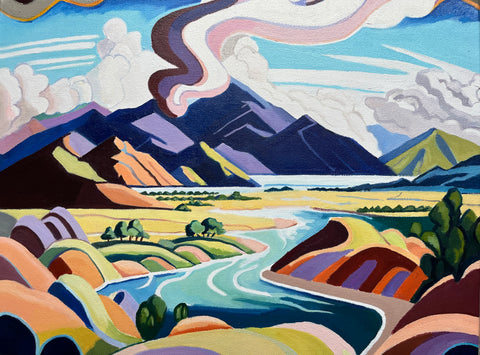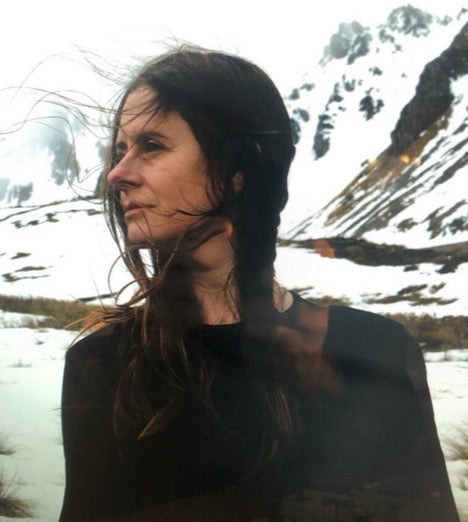Tom Brooker travelled half way round the world to settle in sunny Nelson just over a year ago.
Originally from the UK, he studied at Essex University before spending 12 years working as an assistant to a world famous artist. Tom's portfolio of work includes architecturally designed building case studies and bright New Zealand landscapes. Some from South Island road trips, to a series of kiwiana baches, including two delightfully bold, Boulder Bank Baches.
But it's his recent exploration of AI prompts to inform his art practice that has caught my eye.
At a time when the art world has launched a class action suit against the founders of image generating software, Tom has leaned into it, exploring more of what's possible?
For the uninitiated, Chat GPT is a large based language model, 'enabling users to refine and steer a conversation towards a desired length, format, style, level of detail, and language.'
Midjourney is a generative AI programme generating images from natural language descriptions, called prompts.
A recent article suggests a list of 16,000 artists were used to train the technology and now UK artists, including Tom's former boss Damien Hurst, have joined the fight against the creators of this software.
It was only about a year ago, that Tom was introduced to Midjourney by his brother-in-law, leading to the creation of a series of artworks based on his own work.
"I wanted to see how close Midjourney could replicate one of my paintings."
Tom asked ChatGPT to write the description of his painting, and then fed that back into to Midjourney and painted the resulting image as accurately as possible.
Here is his process:
Step 1 - Asking ChatGpt to give me the properties and description of the painting.
Step 2 - Feeding that reply into Midjourney prompt to get an AI image.
Step 3 - Upscaled version, or slight alterations are made
Step 4 - Using that image from Midjourney, I'm ready to try and copy as an oil painting. I have now assisted AI programs in creating these paintings.
With artwork titles 'Disadvantages of AI', 'Dystopia of AI' and the 'Pros & Cons of AI' you'd expect Tom to be against using AI, but he currently seems philosophical about such progress.
"I don't think AI will be as big a deal as they make it out to be" Tom says, recalling the similar uproar when Photoshop and digital programmes were introduced. He finds the process a learning opportunity, of how to improve the prompts to get better results.
Tom would love to exhibit a series of the AI informed artwork locally, but in the meantime you can check out his AI creations at https://www.tombrookerart.com/




